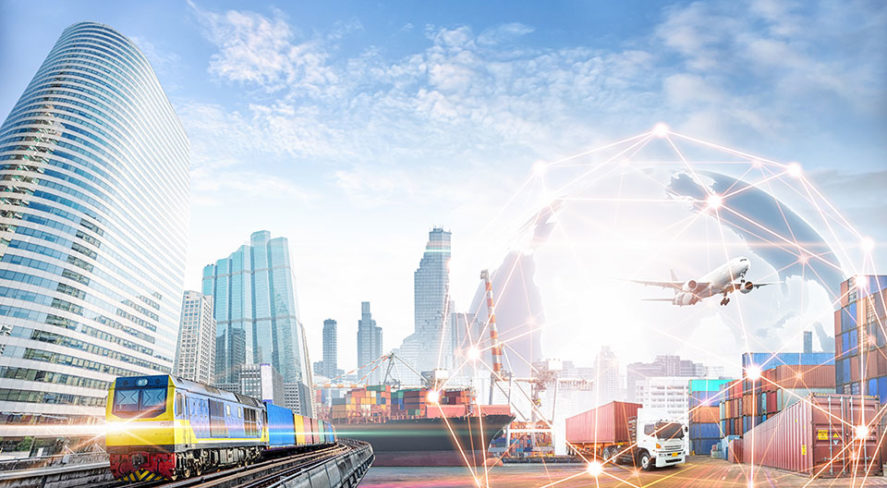Climate conscious construction practices can reduce an organization’s carbon footprint while also improving its bottom line. Several innovative construction ideas exist that could make enormous improvements to the sector, particularly when it comes to energy savings.
Biden’s energy plan aims to provide such projects with additional opportunities. While the specifics of what a final infrastructure bill will look like are yet to be established, the proposal released on March 31 to inject $2 trillion capital over 10 years is a step in the right direction. The measure aims to address the two biggest roadblocks to the implementation of environmentally friendly construction practices: funding and development.
This lunge at infrastructure revival builds on a somewhat similar attempt in 2013, but with one key difference: The 2013 package was aimed at stimulating new repairing existing infrastructure, while the 2022 version is aimed at climate conscious construction. With concerns surrounding global relief and environmental damage increasingly becoming mainstream, climate conscience construction can help organizations take a pro-active approach when it comes to reducing their carbon output.
Investing in new technologies such as AI business software, applications and robotics programs
While we're still in the early stages of AI's growth, its applications are already in use by companies around the globe. With such futuristic tools on the horizon, it's timely that the infrastructure plan talks about investing in them. AI technology, for example, can help organizations save significant amounts of money by monitoring and controlling operations more efficiently and predicting future issues like machinery breakdowns. Machine learning and big data systems make AI a reliable business ally for the future.

The outlook for improving the manufacturing sector in the years to come is bright as well. Robotics, A.I. and the Internet of Things will all continue to facilitate automation in a few industries. For the first time in history, industrial robots are now capable of performing a broad spectrum of functions including surgery, mining and manufacturing. On the other hand, AI and robotics are both one of the biggest environmental threats currently facing the sector. The realization that they will be the direct cause of the Fourth Industrial Revolution means that they need to be examined more closely.
With an eye on the future, the infrastructure plan allows for investment in new technologies that will one day improve efficiency while creating safer, more eco-friendly workplaces. Construction companies that have experience in clean energy will likely be some of the greatest beneficiaries of the infrastructure bill. A recent study by Moody’s Analytics found that the economy, on average, would add about 19 million jobs between the fourth quarter of 2020 and the fourth quarter of 2030. Experts cite the massive demand for everything from steel and iron to cement, copper and glass to create a new energy infrastructure.
Training and retaining a new generation of workers - many of which are already educated, have student debt, and must learn new skills
This kind of heavy investment into high-tech tools also opens a world of opportunities for individuals to learn new skills in an ever-changing workplace. In a tight labor market, training future workers is not just a smart move; it's a necessity. One of the biggest changes in the working world is the struggle to find qualified workers. Some estimates suggest that only 10% of workers will have the digital-savvy capabilities necessary to remain competitive in the years to come. That fact alone should act as a catalyst for investment in education. The long-term impact of the infrastructure bill's efforts to increase education and training can only benefit the US economy and create more opportunities for its people. By 2030, automation and AI will have taken up 70 million American jobs. That could mean millions of new positions for those who gain experience and skills in technology fields.
To prevent a skills gap from crippling American industry, training programs need to be implemented at every level of education. The proposed infrastructure bill can help businesses and educational institutions keep up with training and education needs as a workforce shifts away from low-skilled manufacturing jobs and toward more high-skilled jobs. Underscoring this point, investment in education is a significant area of focus in the plan, including funding for a new national commission to assess higher education and training needs and recommend improvements. Whether those jobs include a return to some of the old-school skills like operating heavy machinery or the reinvention of some of the computer-based jobs, the possibilities are endless.

To implement these changes, most importantly, the plan addresses the most critical issue facing the construction industry: how to train and develop a new generation of workers who are already well-educated, have student debt, and are faced with a changing workforce. The infrastructure bill brings forward an increased focus on retraining and bringing new young people into the workforce, which is vital in helping communities adapt to the changes occurring within the workplace. The infrastructure bill lays out a great blueprint to guide the US toward a prosperous future, creating economic and social opportunity for millions of Americans who struggle today. It is a great step toward improving the working environment and efficiency of American companies, while also creating a better and cleaner environment for our children.
Increasing transparency of operations by providing insight on data, customers, costs, & innovations to traditional practices

While historically, the construction industry has been slow to adopt new technologies, recent advances have enabled construction companies to reach beyond their suppliers and partners and engage with customers and consumers directly. This level of transparency is groundbreaking for the industry. Construction companies are now able to improve trust across both internal stakeholders and external clients by providing access to real-time information about projects. The potential impact of such transparency could diversify business risk, bolster performance and achieve a shift to a reputation of operational excellence.
With that in mind, there are many new initiatives to help improve communication across different sectors of the US economy. The infrastructure bill sets a big opportunity for this industry to start playing a more active role in a sector of the economy that has historically not engaged with the public. If US construction companies can improve their financial transparency, it could help catalyze a shift in the construction industry toward transparency and stronger financial health.
The infrastructure bill is also a significant effort to enhance the transparency of construction processes. An increase in transparency can help eliminate waste, lower costs, increase quality, and result in a more efficient and effective supply chain. This is especially relevant in the area of labor and supply chain. With the support of the public and government officials, the construction industry can build better, more efficient supply chains. We expect to see new innovations in workplace construction through improved technologies and methods. In addition, construction companies can align infrastructure funding with efficient workplace construction by applying design-build and/or alternative delivery methods. Through such an approach, the construction industry can accelerate the adoption of a workforce increasingly focused on innovation.
To reap the full benefits of the infrastructure bill, construction companies need to take action to invest in and advance new technologies and design-build methods and educate staff about how technology can enable an innovative workforce.
COMMENTS
Want to get in on the discussion? We'd love to hear from you. Drop a comment below and we'll get back to you as soon as we can!





